Bark's Bites: Aged Inventory Doesn't Automatically Mean a Good Deal

If you’ve read it once on the Internet, you’ve read it a thousand times: Conventional wisdom says the longer a used car sits on a dealer lot, the more likely it is you’ll get a good deal when you go buy it. People who’ve never spent a day in a dealership like to armchair dealer manager behind their computers and write about things like “floorplan” and “holding cost” like they actually know something about how a dealer principal calculates them, and how they affect pricing.
If this conventional wisdom were actually wise, then I wouldn’t be writing this column. Unfortunately, it isn’t, and adhering to it can cause you to waste a good deal of your time and money. Luckily, your friend Bark is here to give you the real scoop on how, why, and when you should buy at a dealership.
Go ahead, click the jizzump.
There is some wisdom in saying that you can get a good deal on aged inventory. Most dealerships typically price their used inventory high (somewhere around 110 percent of market value) for the first 30 days, and then adjust pricing down as time goes on. The problem with this method is that the car almost never sells within that first 30 days, and now the dealer has had to pay 30 days worth of holding cost on the car.
What’s holding cost, you ask? Simple. Holding cost is calculated by taking the total cost of a used car department, including depreciation, opportunity cost, and interest.
Depreciation is the easiest to understand: Simply take the wholesale value of the car when the dealer acquires it and subtract the wholesale value of the car when the dealer sells it. Not rocket science.
Opportunity cost isn’t as easy to calculate, nor is it as tangible, but it’s absolutely real. A dealer can calculate it by figuring out how quickly he can turn (or sell) a car on average, then figure out the net profit he makes on a car. Let’s say the dealer turns his cars six times a year (or every sixty days), and he makes $1,500 a deal. That means each spot on his lot is worth $9,000 a year in profit. Divide that by 365 days, and that means each day that the dealer is holding that car over sixty days is costing him about $24.65 in opportunity.
Regardless of whether you’re using your own money or someone else’s (normally referred to as a floorplan loan) to finance your inventory, owning inventory is costing a dealer money. Many dealers think that they don’t have holding cost because they don’t floorplan their lot — but they couldn’t be more wrong. The capital the dealer has tied up in your inventory could be invested in some other way that could be earning money. The dealer is throwing away that potential revenue to hold cars.
After a dealer has calculated all the expenses of his department, including all the factors above, his holding cost per car, on average, shouldn’t exceed $30 per day. That doesn’t sound too bad, except that when you figure that a dealer is intentionally pricing a car for a month at a number that gives him very little chance of selling it. That means he’s going to subtract a $900 loss from his front-end gross profit on that unit. Considering the average front-end gross profit on a used car is about $1,500-2,000, that’s a significant loss.
By the time a used car has been on a lot for 60 days, it becomes very difficult for a dealer to make any money on it. That’s why efficient dealers have a “hard turn” policy at 60 days: if the car hasn’t sold in that timeframe, it goes to the auction or is sold to another dealer within the group. Smart dealers realize that it’s better to take a small loss than a big one.
So what about those cars that have sat on lots for over 90 days? Wouldn’t the best deals be available on those?
Eh, not necessarily.
If your dealer truly understood the financial aspects of his dealership, that car wouldn’t be there. With the exception of some truly high-end vehicles, there isn’t enough front-end (meaning the difference between the price the dealer paid for the car and the ultimate selling price) profit built into most used cars for the dealer to be able to make any money on a car that’s been on the lot for 90 days or more. So the very existence of that car on a dealership lot means that the dealer likely doesn’t understand how he makes money.
That’s bad news for you. Why? Because it means that dealer is what they call a “gross” dealer. Now, I know what you’re thinking — most dealers are gross. That’s not what I mean. What I mean is that any dealer willing to hold inventory for that long is trying his damnedest to make front-end gross on each and every car, so the longer the car sits there, the more stubborn he’ll be about the price on it.
When I ask a poorly run dealer what his average front-end gross is, I generally get one of two answers:
- “About $1,500 to $2,500, somewhere in there.”
- “I don’t know.”
So you’re telling me that there’s a thousand-dollar variance? Or, even worse, that you don’t even know? You might be wondering how a dealer like that even knows if he’s making money. I’ll tell you: he doesn’t. He’s hoping that some dummy like you will come in and give him full pop for his car. It’s the “there’s an ass for every seat” mentality. Good luck getting a good deal from that guy.
Smart dealers understand that the best car to make money on is one you turn quickly so you can reinvest that money in a new unit. They price cars fairly from the get-go, and understand turning a car as fast as possible gives them that opportunity. Dealers like that know exactly how much money they make per car on the front-end, as well as how quickly they turn their inventory. They know that it’s better to take a small loss at 60 days than a huge loss at 120.
Trust your Uncle Bark on this one. Use one of the third-party tools online that tells you how long a car has sat on the dealer’s lot. If you see a dealer that has a lot of inventory that’s aged for 90 days or more, your best bet is to look somewhere else as he’s still hoping to make some gross profit. Find a dealer that’s turning his inventory quickly and efficiently, and look for cars that are about 60 days old — that’s your best bet to pay a fair price.
I realize that’s not what every other car buying article on the Internet says — but they’re wrong.

More by Mark "Bark M." Baruth
Latest Car Reviews
Read moreLatest Product Reviews
Read moreRecent Comments
- Kwik_Shift_Pro4X I fell asleep looking at that image.
- Verbal Rented a Malibu a while back. It was fine, if a bit gutless.I get that Detroit wants to go all-in on high profit margin SUVs and blinged-out MAGA trucks. Everyone has known for decades that they can't compete on price in the affordable sedan space. So now all of Detroit's sedans are gone except for a couple of Cadillac models.But you'd think that just one of the domestic brands could produce a fun, competitive and affordable sedan. Just one? Please? Anyone? Bueller?
- 3-On-The-Tree I wouldn’t even use Ford as a hearse for fear of being late to my party.
- SCE to AUX Norway is in Europe, and Tesla is an American automaker - no problems there.I wouldn't use Ford as the bellwether.https://www.reuters.com/business/autos-transportation/tesla-extends-lead-norway-evs-take-record-82-market-share-2024-01-02/https://elbil.no/english/norwegian-ev-policy/
- Steve Biro If the U.S. government wants to talk about banning all connected cars - or at least the collection and sharing of information from said vehicles - I’m all ears. Otherwise, don’t waste my time.

















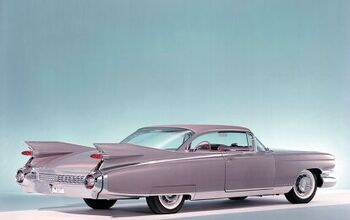
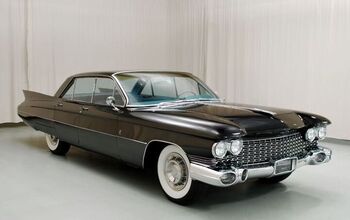
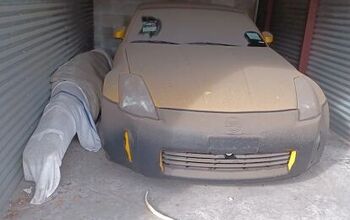







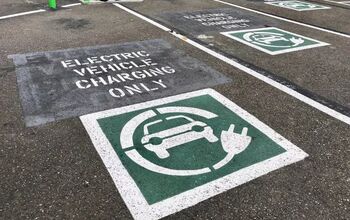





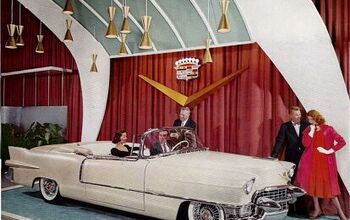
Comments
Join the conversation
This is a strong article because it effectively explains the behavior of dealers when they're being irrational. Why did Mossy group dealers have cars they should have sold at least a year earlier last time I looked at their inventory? Now I know. I suspect that the only reason such places can stay in business is because there are plenty of people in segments of the population that isolate them from any economic realities of survival. Most of them work for the government, or universities fattened by government-gifted student 'loans.'
Carfax and internet research showed my most recent used buy was on lot for 90 plus days. This helped as the price went down about 2k over the time period. The fact it was an RWD only car made it lot poison.